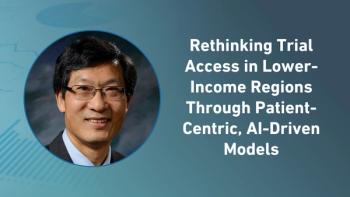
Where Should Investigators New to Clinical Research Start?
There are a number of indicators that suggest that US clinical trial growth is far from plateauing, and demand for clinical research investigators will continue to rise with this growing trend.
There are a number of indicators that suggest that US clinical trial growth is far from plateauing, and demand for clinical research investigators will continue to rise with this growing trend (Figure 1). Albeit only 4% of US physicians participate in a clinical trial [
In Which States do Opportunities Exist for New Clinical Research Investigators?
Biopharmaceutical sponsors study site selection criteria depend on a variety of criteria, such as therapeutic area, medical institution quality, and patient populations, to name a few. However, in order to understand overall clinical trial trends, we ranked the 7 states (according to the number of clinical trials they conducted in 2013), as demonstrated in Table 1.
While one would initially think that opportunities exist in states where most clinical trials are conducted, relentless competition from other investigators resides in these states. Alternatively, states that conduct a lower amount of clinical trials may not have sufficient clinical research infrastructures to support new investigators. Correspondingly, we evaluated clinical trial site capacity across these states, as illustrated in Figure 3.
Figure 3 suggests that investigators in AL, CO and AZ oversee nearly twice as many clinical trials as investigators in PA, TX, CA and NY, which implies that investigators new to clinical research may have an easier time accessing clinical trials in AL, CO and AZ compared to the other states.
In Which States Should New Investigators Start Their Clinical Research Career?
Investigators new to clinical research should take this analysis with a grain of salt because opportunities depend on therapeutic area, clinical research institution preparedness, capacity to conduct new clinical trials, and many more factors. Moreover, the situation of an investigator also varies; for example, if a physician is currently working in an academic research institution, they may find it easier to initially become a sub-investigator in states with high clinical trial volumes. Alternatively, if a physician wants to invest in turning their medical practice into a clinical research center, they may have better chances of attracting clinical trials in states with fewer investigators participating in clinical trials (i.e., AL, CO, AZ), and untapped patient populations.
Suggestions on Getting Started
- Get Certified: It is important to get certified in clinical trials, as certification allows investigators new to clinical research to maintain regulatory and ethical compliance, and deliver quality clinical trial outcomes. Several universities offer comprehensive certification programs in clinical research.
- Gain the Experience: No sponsor will select an investigator that has never participated in a clinical trial. In order to gain experience in clinical research, it is advisable to first become a sub-investigator (i.e., shadowing a Principal Investigator on several clinical trials).
- If You Want to Start Your Own Study Site: Practice caution. Clinical research is not an easy business, and you can easily go out of business because of financial constraints; in 2012, 60% of study sites had 3 months or less of operating cash [2]. Try engaging non-profit organizations, and Site Management Organizations in order to understand what it takes to run a clinical trial organization. Additionally, build your patient base by engaging local advocacy groups for specific therapeutic areas.
Clinical research can offer many opportunities for new investigators, which includes prestige, introducing novel therapies, attracting new patients, strengthening relationships with patient communities, generating additional revenue streams, and much more. With growing demands in clinical research, physicians should consider the opportunity.
References:
[2] Society for Clinical Research Sites
Newsletter
Stay current in clinical research with Applied Clinical Trials, providing expert insights, regulatory updates, and practical strategies for successful clinical trial design and execution.






.png)



.png)



.png)
.png)
